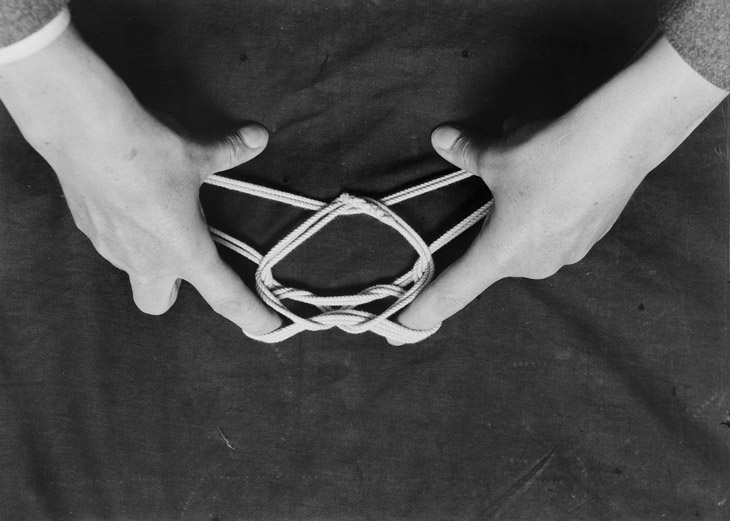 Whai (Māori string game) pattern
Whai (Māori string game) pattern
TLF ID R8537
This is a black-and-white photographic image of a pair of hands holding string in a pattern that was known to Māori in New Zealand as the moko (skin design for female chin and lips) or frog. The photograph was taken by James McDonald in the early part of the twentieth century, at Gisborne, on the East Coast of the North Island. The image measures 11.5 centimetres high by 16.5 centimetres long.
